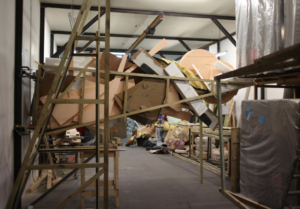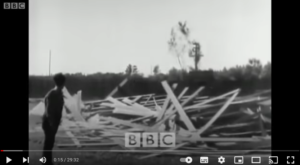


Miranda July Somebody app, 2014-2015.
choosing to participate in this ‘half-app/half-human’ experience that turns communication into a game. people would react to a message that they would have to relay and judge the best way to ‘give’ the message to the person it’s for. this app requires a high level of participation as there is a ‘powerful’ ability to choose how you can convey messages and in what form. many of the messages sent were everyday scenarios of letting someone know about something, breaking up with someone or declaring love; the strange factors in this being context and unfamiliarity. to take part in this you have to download the app and be willing to ‘change’ into something or someone else to deliver a message or ‘reenactment’ of a message. participants can be creative with the relaying and respond to the message before the person who it is aimed at can perceive it through a third body. this, as an experiment, would test our own limits to what we would say or convey to someone we have not met but also how we interact with one another on a larger, ‘worldwide’ scale. like the ‘walk’ score, i imagine there is no time to familiarise yourself with the task but to do it within that moment and find ways to modify it and make it ‘better’ later, also there is the element of being seen by others whilst carrying out a message which needs to be taken into account.
PHYLLIDA BARLOW

https://www.royalacademy.org.uk/art-artists/name/phyllida-barlow-ra
“I enjoy the idea of reaching into the space of the space, beyond the human scale, exploring overhead or underfoot – my work is often parasitic or antagonistic to the building. I see each space as something to be explored, rather than just a place to put something.”
thinking of play within an art-making process or how an audience may perceive and interact with the work. Barlow works with large industrial materials that she then manipulates through destructive means of throwing, breaking and putting together, to fill often large spaces with a variety of assemblages. with this process there are elements of the work that come down to chance, of what shape and size it will take once it has been modified by Barlow. i believe Sicart’s notions of play can be found in scale, something that we would encounter so unexpectedly, like Claes Oldenburg’s large-scale projects that puts otherwise functioning objects into a public space.

http://oldenburgvanbruggen.com/largescaleprojects/gartenschlauch-04.htm
going to see Phyllida Barlow’s work at the Royal Academy exhibition (2019) meant a lot of ducking underneath or walking through tight spaces between sculptures. there was no route or entry but spaces, almost like vantage points, where the ability to see the work from different angles was permitted. a way of making and showing what the materials have gone through are not covered up or attempted to be hidden, ‘Barlow, instead of concealing, takes pleasure in exposing the chaos while allowing multiple scenarios to exist simultaneously.’ (https://sculpturemagazine.art/phyllida-barlow). https://www.youtube.com/watch?v=37I56RHFpz4 within this video she mentions Buster Keaton and his films as being an important influence behind her work. his ability to create impossibly comedic moments in his films through large props that are made to fail and fall apart is seen within Barlow’s work. walking underneath these assemblages gives the feeling of hesitancy and the need to be careful; these are made with the intention that they could fall and collapse at any moment.

(https://somebodyapp.com/)

Leave a Reply